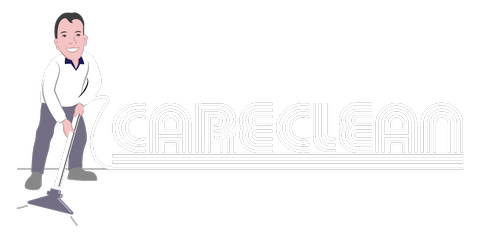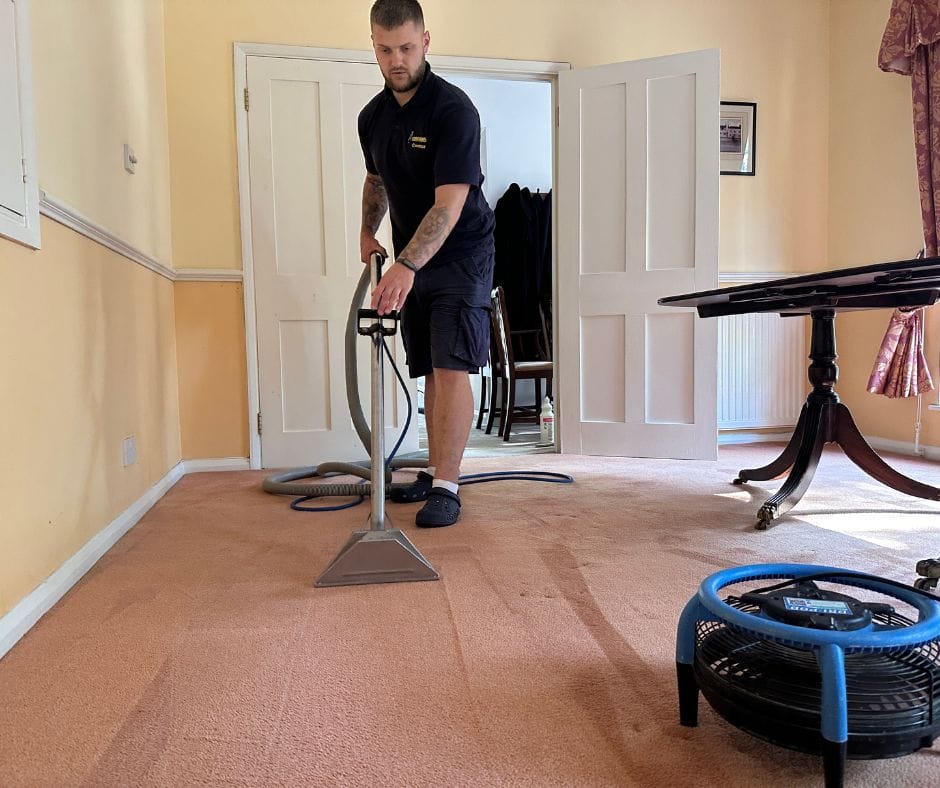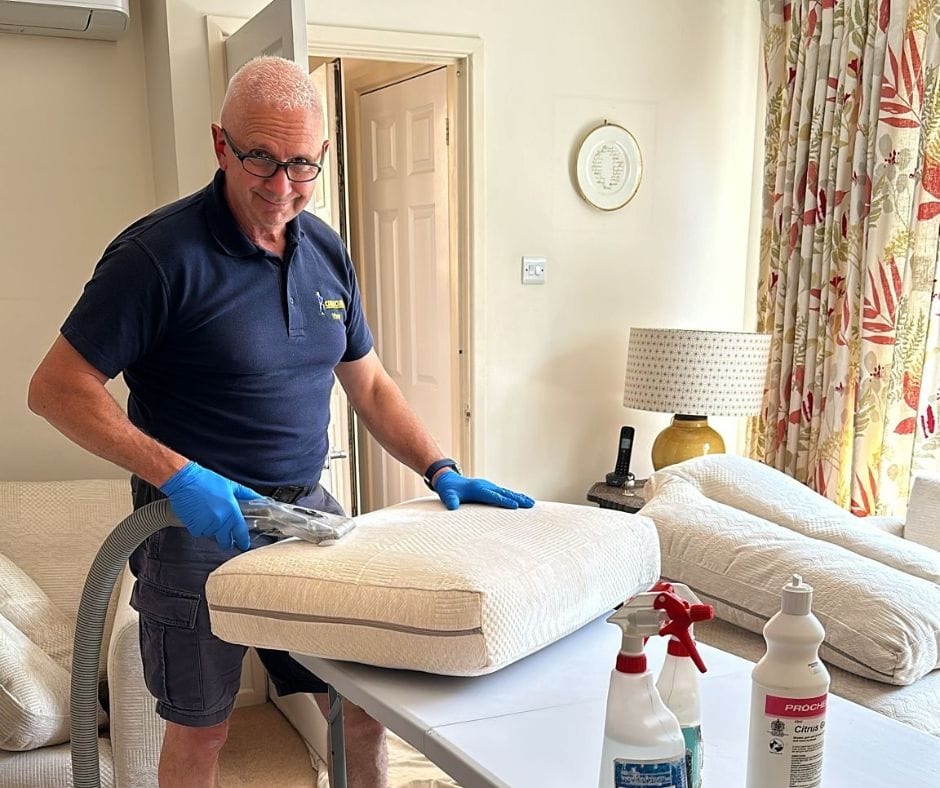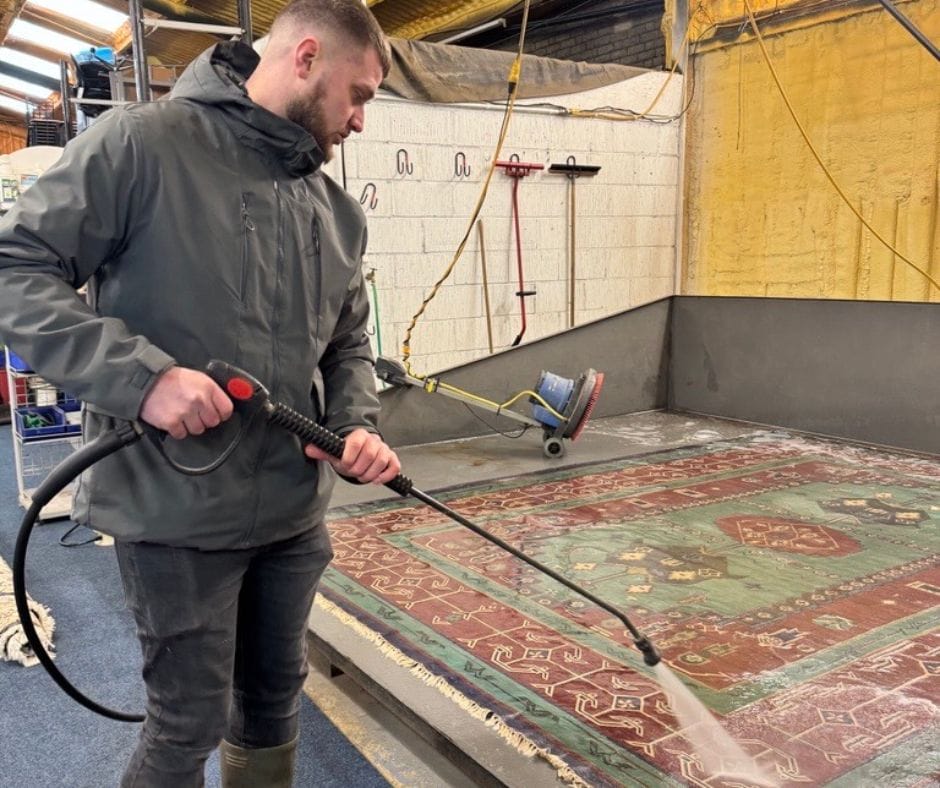You might have spotted one. A faint halo on the armrest. A splash mark across the back cushion. Maybe you tried to dab it gently… and suddenly, that small patch turned into something worse.
Watermarks on fabric sofas can be deceptively tricky.
It’s not just water. It’s what’s in the water, how the fabric responds, and how easy it is to “set” a permanent outline without meaning to.
Let’s walk through what causes these stains… and why a professional approach really matters if you want to avoid making it worse.
Quick Overview: What You’ll Learn Here
- Why watermarks appear in the first place
- How different fabrics react to moisture
- Why DIY attempts often spread or worsen the mark
- How professional upholstery cleaners approach it safely
- When it’s time to leave it alone… or call for help
What Actually Is a Watermark?
A “watermark” is usually a ring or discoloured patch left behind after a fabric surface becomes wet and then dries unevenly.
But here’s the key:
It’s rarely just water.
Even if the spill is clean, the fabric fibres respond in ways that shift how light reflects… leaving a dull or tide-mark style shape behind. And if the water carried any trace minerals, cleaning agents, or body oils from hands or pets, those elements stay behind as residues.
Why Sofas React So Differently
Not all fabrics are equal… and sofas often have mixed fibres, linings, and padding beneath the visible surface.
Some challenges we see across Essex homes:
- Cotton-blend sofas absorb moisture quickly, causing clear tide marks.
- Velvet or viscose fabrics can matt or permanently change texture.
- Tight weaves like polyester might hide watermarks at first, but show them later as dried residue.
- Natural fillings or padding underneath can wick moisture up from below… leading to hidden rings that appear days later.
This is why a quick “wipe” or cloth dab, even with plain water, can leave a bigger issue than the original splash.
Related: Spot Cleaning Risks… What Happens Next
The Hidden Triggers Behind Water Marks
Watermarks don’t always appear right away. Sometimes the stain emerges after the surface dries… and it’s often worse if:
- The fabric wasn’t rinsed evenly.
- A cleaning product wasn’t fully removed.
- The sun or heating dried it unevenly.
- Natural oils (from skin, pets, or conditioners) lifted during the wetting process.
Sometimes we visit homes where someone simply tried to “refresh” a cushion with a damp cloth… but the new mark now looks worse than the original smudge.
It’s not a failure… it’s fabric chemistry. And it’s surprisingly common.
Can You Fix It Yourself?
Short answer? Sometimes… but it’s a gamble.
If you try to wet the whole area evenly, you might think that’ll “even out” the watermark. But if that water isn’t properly extracted, or if the fabric reacts mid-way through, you’re left with:
- A much larger mark
- Colour fading in patches
- Unseen mould risk inside the padding
We’ve had clients in Leigh-on-Sea or Chelmsford show us photos of their “before and after”… and sadly, they’ve often made it worse by trying to fix it without the right tools or method.
Want a deeper dive? Here’s why DIY spot cleaning often fails
How We Tackle Water Marks Professionally
At Careclean, we approach every sofa individually… because no two marks behave the same.
Here’s how we usually assess and treat them:
- Fabric Test First
We test the area for dye fastness, fibre behaviour, and how the fabric reacts to controlled moisture. - Gentle Pre-Treatment (If Safe)
We use fabric-safe agents to break down any residues around the mark. - Even Rewetting + Controlled Extraction.
This step is crucial. We dampen the full panel carefully, then extract using equipment that regulates pressure and moisture. - Drying With Care
No blow heaters, no harsh fans. We dry evenly, often using towels or pads to prevent wick-back marks.
It’s methodical, slow… and worth it.
See the full process: How Our Upholstery Cleaning Works
When Is It Not Safe to Touch?
There are cases where we advise doing nothing… at least until we’ve assessed it.
For example:
- Antique fabrics that might shrink with moisture
- Loose or damaged linings inside the cushion
- Very faint water rings that may lift out with dry vacuum only
If in doubt? Leave it. Let us assess… we’d rather prevent damage than “solve” something that didn’t need fixing in the first place.
Will It Always Come Out?
We wish we could promise yes… but that depends on:
- The age of the mark
- What was in the original water
- How the sofa’s been treated since
That said, we’ve restored hundreds of sofas across Essex where the client thought it was permanent. Some of the worst cases came good… others simply faded to near-invisible after gentle care.
You’re always welcome to send a photo or ask.
Read what other clients say here: Client Testimonials
How to Prevent Water Marks in the First Place
A few things we suggest:
- Avoid over-wetting when doing any surface wipe.
- Don’t use multi-surface sprays on sofa arms or backs.
- Blot, don’t rub — and don’t try to “chase” the mark.
- Get a regular full sofa clean if you have kids, pets or fabric blends.
It’s often the combination of moisture and time that makes the mark — not just the spill itself.
For Those Outside Essex
If you’re reading this from outside our area, we recommend checking the NCCA website to find a certified, gentle upholstery cleaning specialist near you.
Not all cleaners are trained in watermark control… it’s a delicate skill.
A Gentle Word from Our Team
Watermarks feel unfair. You didn’t spill wine or coffee. It was just a splash… or a cloth wipe. But now there’s a halo that seems to grow by the day.
Let us take a look before it gets harder to reverse. Even if we advise waiting… or leaving it entirely… at least you’ll know.
Here’s how we work… and how we treat every sofa like it’s our own.
FAQs about Watermarks on Your Upholstery
Can plain water really stain a sofa?
Yes. Especially on delicate or absorbent fabrics. The mark comes from the way water dries unevenly or leaves mineral traces.
Why did the mark look worse the next day?
Moisture can wick into deeper layers or react with existing oils or residues. That causes a delayed ring effect.
Will one clean fix it completely?
Often yes… but sometimes it fades across two stages. We’ll never overpromise.
Can I hide it with a cover instead?
You can, but the mark could spread underneath. Worth a check first.
Is this something you see a lot?
Very. Especially in Southend, Chelmsford, and Leigh-on-Sea, where we see lots of natural light and delicate sofas.





